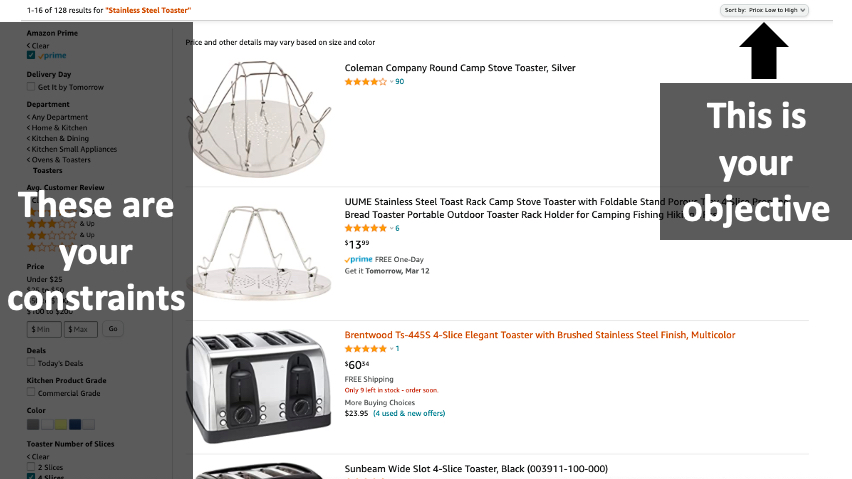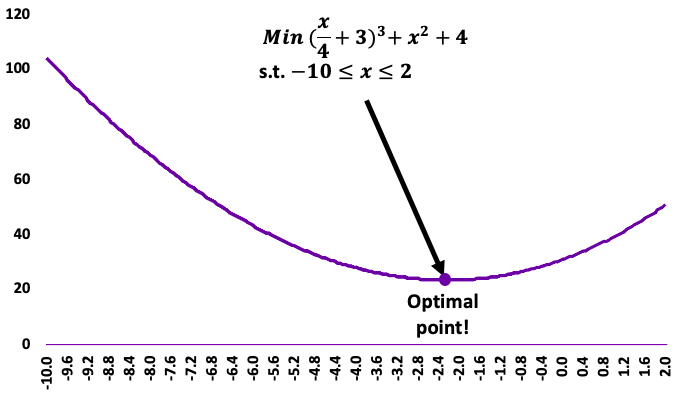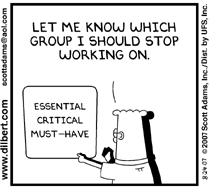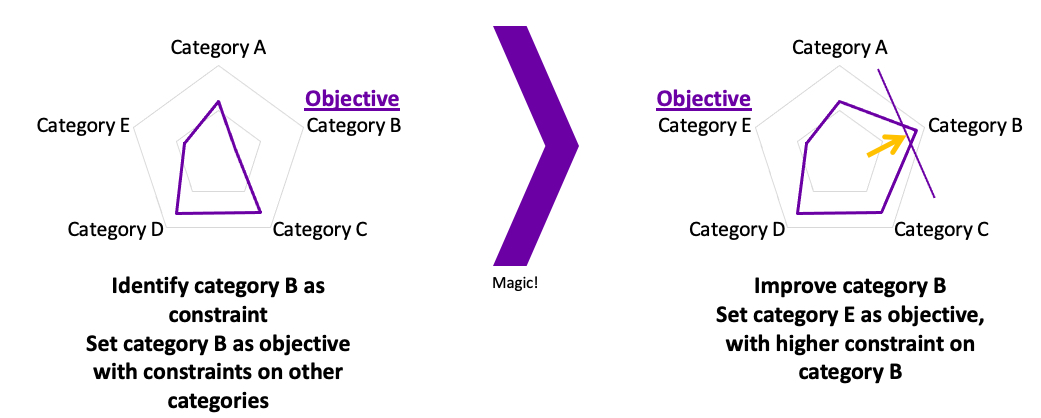How to improve your life with optimization
In this post you’ll get a quick primer on what optimization is, understand how fewer objectives lead to better outcomes, and be compelled to optimize your life for decision cost.
Buying a toaster: an optimization problem
Optimization is a decision making technique that mathematically makes the best possible decision based on two key inputs: an objective, and a set of constraints that cannot be broken.
The objective is a combination of a metric and the whether you want more or less of it. Many business optimization problems are either cost minimization or revenue maximization problems (less cost or more revenue).
Constraints must be met for a decision to be feasible, circuitously limiting the amount of feasible decisions. An example constraint for a cost minimization problem is, “we must ship all of product X to location A”. This constraint eliminates a lot of potential options from consideration, including the most effective cost minimization technique: doing nothing ($Free). Constraints must be measurable, otherwise there would be no way of knowing if the constraint is broken when examining a potential decision.

An example of optimization in everyday life is buying a toaster on Amazon. When you think, “I want the cheapest toaster that I can get on Amazon prime that has at least 4 star reviews, is silver, and can handle 4 slices at a time,” you can frame that as an optimization problem:
- Objective: Minimize price
- Constraints: on Amazon.com, prime shipping, >=4star reviews, stainless steel, >= 4 slice capacity
You can also think of your objective as the ‘sort metric’ and the constraints as ‘filter metrics’ on the Amazon website. After filtering for all your criteria and sorting by your objective, the most optimal choice is at the top!
Optimization presents itself in daily life and complex math; in fact, many advanced analytical methods are actually optimization problems in disguise:
- Regression: decide coefficients that minimize sum of squared errors
- Random forest: decide split groups that minimize error (for each split, for each tree)
- K-means clustering: decide cluster assignments that minimize total distance between each point and its cluster center

Set fewer objectives at work
Optimization allows for only one objective at a time, much to the chagrin of…pretty much everyone. Consider the toaster problem: you can’t sort both by price and by quality on Amazon. Why, then, do companies and teams try and improve everything all the time?
You’ve probably been in annual planning meetings where leadership sets a vision of:
- Improving NPS by 5 points
- Cutting costs by 5%
- Growing revenue by 5%
- Increase employee satisfaction by 5%
Then, once everyone leaves the meeting, they have no answer for the question, “What do we do now?” Instead of creating a vision, leadership has created confusion by having more than one objective!

Organizational challenges often stem from employee decisions that conflict with management expectations. Many of these decisions are due to difficulty translating the business objective(s) into a decision-making process that chooses the optimal outcome. Optimizing for more than one outcome is something that is:
- Best-case scenario: very complicated (like composite scores, weighted sums)
- Worst case scenario: impossible (conflicting metrics, unknown objectives)
After a few iterations of trying to decipher what decision makes management the most happy, employees simply give up. Without a simple decision making process to follow, decisions are forced upwards and progress slows.
Having only one objective at a time means that routine decisions can be made at the lowest levels. This type or organizational alignment means the company can go faster, reduce reliance on management for day-to-day decision making, clearly connect employee effort to business outcomes, and ensure everyone is ‘marching to the beat of the drum’ (or any other synergistic saying you prefer).
You obviously do not want to optimize for the same thing all the time; instead, it is better to sample from the theory of constraints and lean six-sigma and adopt the following pattern:
- Identify the constraint
- Set that as the objective for a team, with constraints on the other metrics
- Improve that metric, and implement controls so that the metric does not slip
- Shift focus to the next constraint

This pattern gives the flexibility to change priorities over time, while iterating the organization’s outcomes towards a more desirable state.
Optimize for decision cost
If you get overwhelmed by the amount of tradeoffs and decisions you have to make in a day, you are not alone: it is a psychological phenomenon called decision fatigue. We make hundreds of decisions per day, all of which can be framed as some sort of optimization problem:

Psychologist have found that people have a fixed capacity for decision-making in a given time period. As that capacity depletes, decision quality decreases and outcomes get worse.
Why, then, waste this scarce resource on decisions that have no major impact on your life? Instead, you can optimize your day-to-day life for minimizing decision cost, so that when important decisions come up you have a full decision-making tank available.
You’ll see I wear only gray or blue suits. I’m trying to pare down decisions. I don’t want to make decisions about what I’m eating or wearing. Because I have too many other decisions to make. You need to focus your decision-making energy.
Some examples of how I (and the former Chicago resident quoted above) do this:
- Eat the same breakfast every day, or at least have the same breakfast sequence every week (in my house we do oatmeal Mon/Wed, cereal Tue/Thu, and #EggFriday)
- Wear work clothes in the same order: after washing it, place it in the back of the line, creating a FIFO inventory system for your clothes (this happened when I went in to an office, now I have more of a LIFO t-shirt method, which my coworkers can attest to)
- Only read the menu at a restaurant until you find something that sounds good enough; reading beyond this point will only make you unhappy at what you chose (this is good life advice in general; “Meal comparison is the thief of joy” – Theodore Roosevelt)
Not everyone’s decision-making resources will go to the same place; instead you should spend your decision-making ability where it matters to you. If it makes you happy to have the sleekest house aesthetic, then spend your decision effort finding the perfect toaster. If your life’s objective doesn’t change at all by toaster quality, buy the Amazon basics one and save that decision making power for something more important.
